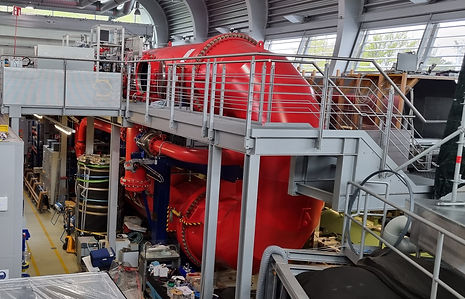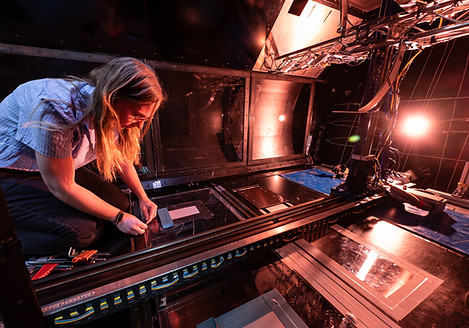Turbulence
In our everyday lives we are surrounded by turbulent flows. Think of the smoke that blows out from your morning cup of coffee, the atmosphere (not only the Earth’s. Jupiter’s red spot is a prime example of a turbulent atmosphere), water passing through a river or waterfall, winds, ocean currents, etc, etc, etc… These flows are unsteady, irregular and seemingly random/chaotic. Their velocity varies irregularly in time and space, and they enhance the transport and mixing of matter, heat and momentum.
Turbulent flows are multiscale. That is, they follow a scale hierarchy that is delimited by the larger scales on the one hand, and the smallest -or dissipation- scales on the other. This is depicted by the famous Richardson cascade, where it is qualitatively stated that there is an energy transfer from the biggest to the smallest scales in three-dimensional turbulent flows. This transfer is stopped until the dissipation range is reached, and other mechanisms come into play. These flows can be typically described by their energy dissipation rate and their viscosity (e.g., honey is more viscous than water), and we say that a flow is turbulent when its Reynolds number, which is defined in terms of the flow’s characteristic velocity, length and viscosity, is high.
It has been 200 years since the equations that describe fluid dynamics, the Navier-Stokes equations, have been around. This means that there are a lot of things that we know about turbulence. For instance, we know that at intermediate range of scale, the energy dissipation rate is constant, and that there are several scaling laws that are valid (this comes from the phenomenological theory proposed by A. Kolmogorov in 1941). Nevertheless, little is still known about the smallest scales. This is because technology can’t catch up to theory: our computational power is not enough to model turbulent flows down to their smallest scales while keeping a reasonably high Reynolds number; and experimentally, we have an instrumental resolution that is just not enough.
This is the project that I’m currently working on at the Max Planck Institute for Dynamics and Self-Organization. We are pushing the limits and being on the cutting-edge of science as we are able to achieve spatial resolutions that have not yet been experimentally achieved. This is done with the aid of the Göttingen Variable Density Turbulence Tunnel (VDTT, shown in the photo), which is one of the few pressurized wind tunnels in the world.
Having these measurements at the smallest scales can have a big impact for fluid dynamicists as it will provide the first direct evidence of what really happens in the dissipation range. This can also have implications in modelling techniques actively used in fluid dynamics, as the smallest scales need to be taken into account when doing LES or RANS modeling.

The Variable Density Turbulence Tunnel at the Max Planck Institute for Dynamics and Self-Organization. This impressive tunnel is two stories high and 18m long, and has a volume of 88m^3 !
